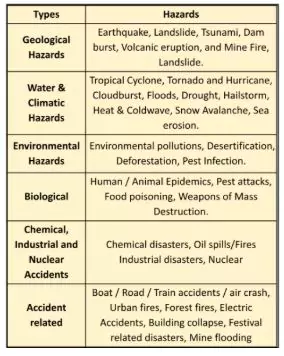According to Swiss Re, a leading reinsurance company based in Zurich, natural disasters caused $135 billion in economic losses globally in the first half (H1) of 2025, up from $123 billion in the same period in 2024.
Key Highlights of the Report
- Record Wildfire Losses in the USA: The Los Angeles wildfires in January 2025 caused an estimated $40 billion in insured losses — the largest-ever insured wildfire loss event globally.
 Causes include strong winds, lack of rainfall, and high-density residential areas with high-value assets.
Causes include strong winds, lack of rainfall, and high-density residential areas with high-value assets.- Wildfire-related losses now make up 7% of all natural catastrophe claims, up from just 1% before 2015.
- Severe Thunderstorms: Insured losses from severe thunderstorms reached $31 billion in H1 2025.
- Hurricane Season Warning: Historically, the second half of the year sees higher losses due to the North Atlantic hurricane season.
- If trends continue, total global insured losses in 2025 could exceed Swiss Re’s projection of $150 billion.
- Myanmar Earthquake: A major earthquake in March 2025 affected Myanmar, with tremors felt in Thailand, India, and China.
- In Thailand alone, insured losses were estimated at $1.5 billion.
- Man-made Disasters: Industrial accidents and other man-made events caused $8 billion in economic losses, of which $7 billion were insured.
- Insurance and Risk Trends: Out of the $135 billion in natural disaster losses, $80 billion was insured, nearly double the 10-year average (adjusted to 2025 prices).
- Actions Required:
- Mitigation and adaptation are the most effective ways to reduce future losses.
- Flood protection infrastructure (dykes, dams, gates) can be up to 10 times more cost-effective than rebuilding after disasters.
- Emphasis on building resilience through climate-smart planning, early warning systems, and land-use regulations.
| A natural disaster is a sudden, calamitous event caused by natural processes that results in significant harm to a community or society. These events cause widespread destruction, loss of life, and substantial economic and environmental damage. The key distinction is that they are driven by natural forces rather than human actions. |
India’s Vulnerability to Natural Catastrophes
- Geographical Exposure:
- Himalayan Belt: Prone to earthquakes and landslides due to tectonic activity.
- Coastal Regions: Vulnerable to cyclones, storm surges, and tsunamis, especially on the east coast.
- North and Northeast India: Witness frequent floods due to river overflows, glacial lake outbursts, and monsoon extremes.
- Western and Southern India: Often affected by droughts and heatwaves.
- Climatic and Seasonal Trends:
- Monsoon variability is increasing due to climate change, causing flash floods in places like Uttarakhand and Himachal Pradesh and deficient rainfall in rain-fed agricultural zones.
Economic Impact of Natural Disasters in India
- Direct Economic Losses: Estimated at 2–3% of GDP annually due to infrastructure damage, crop losses, and livelihood disruption (World Bank).
- Example: Cyclone Amphan (2020) alone caused estimated damages of $13 billion in West Bengal and Odisha.
- Sectoral Impacts:
- Agriculture: Highly climate-sensitive; frequent droughts and unseasonal rains destroy crops, impacting food security and farmer incomes.
- Infrastructure: Roads, railways, and power grids face frequent disruption; rebuilding diverts critical public investment.
- Urban Economy: Flooding in metros like Mumbai and Chennai severely disrupts economic productivity.
- Insurance Penetration:
-
- Very low: Less than 1% of disaster losses are insured in India (UNDRR), increasing fiscal burden on government post-disaster relief and rehabilitation.
- Long-Term Developmental Loss: Natural disasters exacerbate poverty, displacement, and health risks, reversing years of development gains—especially in disaster-prone states like Bihar, Assam, and Odisha.
Disaster Risk Reduction (DRR) and Economic Preparedness:
- Policy Framework:
- Disaster Management Act, 2005: Mandates creation of NDMA and SDMAs for institutional preparedness.
- National Disaster Management Plan (NDMP): Integrates risk mitigation, early warning, and climate resilience into national planning.
- Early Warning Systems:
- IMD and ISRO have developed satellite-based cyclone and flood prediction systems.
- Mobile-based alerts now widely used in cyclone-prone areas (e.g., Fani, 2019).
- Mitigation Programs:
- National Cyclone Risk Mitigation Project (NCRMP)
- Faster implementation of Smart Cities Mission and urban flood resilience infrastructure
- Emphasis on nature-based solutions: mangroves, watershed management, green buffers
- Disaster Risk Financing:
- State and National Disaster Response Funds (SDRF/NDRF) provide ex-post relief.
- Push for risk-transfer mechanisms like:
- Catastrophe bonds
- Parametric insurance for farmers (Pradhan Mantri Fasal Bima Yojana)
- Greater role of private insurers
Read More About Natural Hazards and Disasters: Causes, Impacts and Mitigation Measures
![]() 7 Aug 2025
7 Aug 2025

 Causes include strong winds, lack of rainfall, and high-density residential areas with high-value assets.
Causes include strong winds, lack of rainfall, and high-density residential areas with high-value assets.